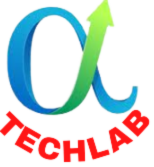अब हम Deep Learning के एक cutting-edge topic की ओर बढ़ते हैं:
🔍 “Learn from data itself – without explicit labels.”
🔷 1. What is Self-Supervised Learning?
Self-Supervised Learning (SSL) एक ऐसी approach है जिसमें model को बिना manually labeled data के train किया जाता है।
👉 ये unlabeled data से ही pseudo labels generate करता है।
Goal: Supervised learning जैसी performance, लेकिन बिना manually labeled dataset के।
🔶 2. SSL क्यों ज़रूरी है?
| समस्या | समाधान |
|---|---|
| Labeling data महंगा है | SSL human labeling को minimize करता है |
| कई domains में unlabeled data abundant है | SSL उससे फायदा उठाता है |
| Pretraining + Fine-tuning = बेहतर generalization | SSL मॉडल transferable बनाता है |
🔷 3. SSL कैसे काम करता है?
✅ Key Idea:
Model खुद ही input के कुछ हिस्सों से दूसरा हिस्सा predict करने का task सीखता है।
| SSL Task Type | उदाहरण |
|---|---|
| Contrastive | Two similar images → close representations |
| Masked modeling | Sentence का हिस्सा छिपा दो → predict करो |
| Pretext tasks | Rotation predict करना, Colorization, etc. |
🔶 4. Popular Self-Supervised Tasks
✅ A. Contrastive Learning (Image)
एक ही object के दो augmentations → similar representation
अलग-अलग object → दूर representation
- Frameworks: SimCLR, MoCo, BYOL
Loss = NT-Xent (Normalized Temperature-scaled Cross Entropy)
✅ B. Masked Language Modeling (NLP)
Input में कुछ tokens को mask करो, फिर उन्हें predict करो
जैसे BERT करता है
Input: "I like [MASK] learning."
Target: "deep"
✅ C. Autoencoding
Input से खुद को reconstruct करना
- Example: Autoencoders, Variational Autoencoders
✅ D. Predict Context (Next Frame, Next Word, etc.)
- Next Word Prediction: GPT जैसे models
- Next Frame Prediction: Video prediction tasks
🔷 5. Examples of SSL in Practice
| Model / Method | Domain | Technique |
|---|---|---|
| BERT | NLP | Masked token prediction |
| SimCLR | Vision | Contrastive loss |
| BYOL, MoCo | Vision | Momentum encoder |
| GPT | NLP | Next token prediction |
| MAE (Masked Autoencoders) | Vision | Mask patches, reconstruct |
🔶 6. Advantages of Self-Supervised Learning
✅ Manual labels की dependency नहीं
✅ Large-scale data से बेहतर generalization
✅ Transfer learning के लिए बेहतरीन
✅ Few-shot या Zero-shot tasks में useful
🔶 7. Self-Supervised vs Unsupervised vs Supervised
| Method | Labels Required | Example |
|---|---|---|
| Supervised | ✅ Yes | Classification, Regression |
| Unsupervised | ❌ No | Clustering, PCA |
| Self-Supervised | ❌ Pseudo | BERT, SimCLR, GPT |
🧪 Use Case: SimCLR in Vision (PyTorch)
import torchvision.transforms as T
from PIL import Image
transform = T.Compose([
T.RandomResizedCrop(224),
T.RandomHorizontalFlip(),
T.ColorJitter(),
T.ToTensor()
])
img = Image.open("cat.jpg")
x1 = transform(img) # View 1
x2 = transform(img) # View 2
# Pass x1, x2 to encoder → project → NT-Xent loss
📝 Practice Questions
- Self-Supervised learning में labels कैसे generate होते हैं?
- Contrastive Learning और Masked Modeling में क्या अंतर है?
- SimCLR किस domain में काम करता है और कैसे?
- GPT और BERT में SSL का role क्या है?
- SSL के फायदे क्या हैं supervised learning के comparison में?
🔚 Summary
| Concept | Detail |
|---|---|
| SSL Definition | Data से खुद labels generate करके learning |
| Famous Tasks | Masking, Contrastive, Autoencoding |
| Popular Models | BERT, GPT, SimCLR, BYOL, MAE |
| Advantage | Label-free pretraining, Generalization |
| Real Use | NLP, Vision, Robotics, Video |
